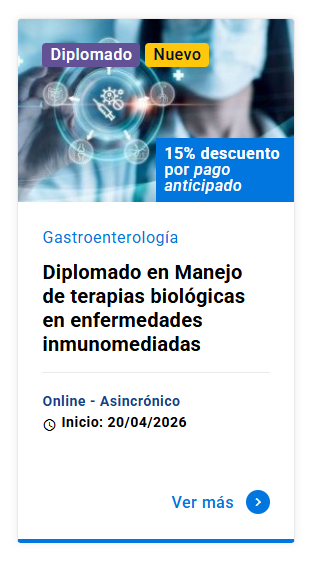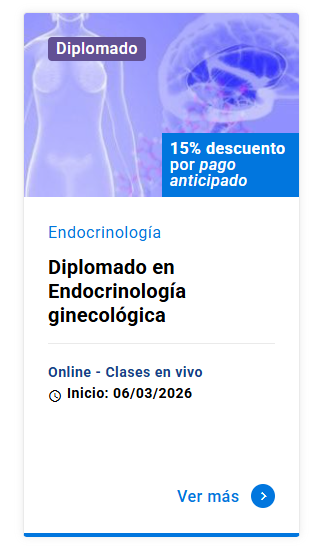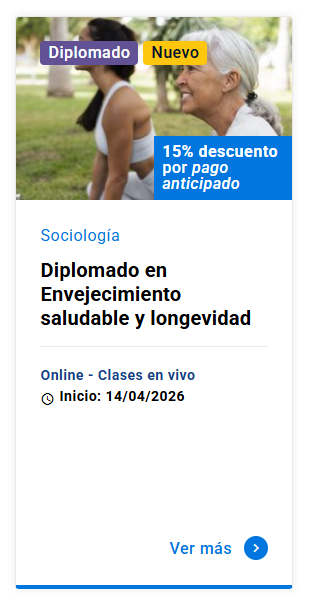Estimulación de la médula espinal: una nueva estrategia terapéutica para restaurar la función motora
DOI:
https://doi.org/10.11565/arsmed.v42i3.1001Palabras clave:
enfermedad de Parkinson, centros generadores de patrones, actividad neural., Estimulación de la médula espinal, neuromodulaciónResumen
La estimulación dela Médula Espinal(EME) es una técnica de neuromodulación que ha mostrado ser efectiva en el manejo de los trastornos motores propios de enfermedades tan devastadoras comola Enfermedadde Parkinson (EP) y las lesiones de la médula espinal. Considerando que ambas patologías cuentan con opciones terapéuticas limitadas,la EMEse podría posicionar como una técnica prometedora. Los mecanismos por los cuales operaría la estimulación difieren en ambos casos, generando cambios en la circuitería espinal local en el caso de las lesiones medulares, y cambios supraespinales, en el caso dela EP. Enesta revisión se busca analizar los efectos dela EMEen ambas enfermedades, tanto en modelos animales como en pacientes, hacer una breve descripción de los mecanismos y aludir a los desafíos futuros propuestos para ambos casos.
Descargas
Citas
Agari T & Date I (2012). Spinal cord stimulation for the treatment of abnormal posture and gait disorder in patients with Parkinson’s disease. Neurologia Medico-Chirurgica, 52(7), 470-474.
Ahlskog J & Muenter M (2001). Frequency of levodopa-related dyskinesias and motor fluctuations as estimated from the cumulative literature. Movement Disorders, 16(3), 448-458. https://doi.org/10.1002/mds.1090
Arii Y; Sawada Y; Kawamura K; Miyake S; Taichi Y; Izumi Y & Mitsui T(2014). Immediate effect of spinal magnetic stimulation on camptocormia in Parkinson’s disease. J Neurol Neurosurg Psychiatry, 85(11), 1221-1226. https://doi.org/10.1136/jnnp-2014-307651
Beres-Jones, J & Harkema, S (2004). The human spinal cord interprets velocity-dependent afferent input during stepping. Brain, 127(10), 2232-2246. https://doi.org/10.1093/brain/awh252
Brown, J; Deriso D; & Tansey K (2012). From contemporary rehabilitation to restorative neurology. Clinical Neurology and Neurosurgery, 114(5), 471-474. https://doi.org/10.1016/j.clineuro.2012.04.009
Brys I; Bobela W; Schneider B; Aebischer P & Fuentes, R. (2016). Spinal cord stimulation improves forelimb use in an alpha-synuclein animal model of Parkinson’s disease. International Journal of Neuroscience, 7454, 1-9. https://doi.org/10.3109/00207454.2016.1138296
Cameron T (2004). Safety and efficacy of spinal cord stimulation for the treatment of chronic pain: a 20-year literature review. J Neurosurg 100 254-267.
Capogrosso M; Milekovic T; Borton D; Wagner F; Martin Moraud E; Mignardot J & Courtine G (2016). A brain-spinal interface alleviating gait deficits after spinal cord injury in primates. Nature, In Press(7628), 284-288. https://doi.org/10.1038/nature20118
Capogrosso M; Wenger N; Raspopovic S; Musienko P; Beauparlant J; Bassi Luciani L & Micera, S (2013). A Computational Model for Epidural Electrical Stimulation of Spinal Sensorimotor Circuits. Journal of Neuroscience, 33(49), 19326-19340. https://doi.org/10.1523/JNEUROSCI.1688-13.2013
Carlsson A (2002). Treatment of Parkinson’s with L-DOPA. The early discovery phase, and a comment on current problems. Journal of Neural Transmission, 109(5-6), 777-787. https://doi.org/10.1007/s007020200064
Courtine G; Gerasimenko Y; van den Brand R; Yew A; Musienko P; Zhong, H & Edgerton V(2009). Transformation of nonfunctional spinal circuits into functional states after the loss of brain input. Nature Neuroscience, 12(10), 1333-1342. https://doi.org/10.1038/nn.2401
Courtine G; Song B; Roy R; Zhong H; Herrmann J; Ao Y & Sofroniew M (2008). Recovery of supraspinal control of stepping via indirect propriospinal relay connections after spinal cord injury. Nature Medicine, 14(1), 69-74. https://doi.org/10.1038/nm1682
Danner S; Hofstoetter U; Freundl B; Binder H; Mayr W; Rattay F & Minassian K (2015). Human spinal locomotor control is based on flexibly organized burst generators. Brain, 138(3), 577-588. https://doi.org/10.1093/brain/awu372
Deer T; Mekhail N; Provenzano D; Pope J; Krames E; Thomson S; North R (2014). The appropriate use of neurostimulation: Avoidance and treatment of complications of neurostimulation therapies for the treatment of chronic pain. Neuromodulation, 17(6), 571-598. https://doi.org/10.1111/ner.12206
Dimitrijevic M. R; Dimitrijevic M; Faganel J & Sherwood A (1984). Suprasegmentally induced motor unit activity in paralyzed muscles of patients with established spinal cord injury. Ann Neurol, 16(2), 216-221. https://doi.org/10.1002/ana.410160208
Dimitrijevic, M; Gerasimenko Y & Pinter M (1998). Evidence for a spinal central pattern generator in humans. In Annals of the New York Academy of Sciences 860 (360-376). https://doi.org/10.1111/j.1749-6632.1998.tb09062.x
Dimitrijevic M; Kakulas B; McKay W & Vrbová G (2012). Restorative Neurology of Spinal Cord Injury. Restorative Neurology of Spinal Cord Injury. https://doi.org/10.1093/acprof:oso/9780199746507.001.0001
Dimitrijevíc M & Nathan P (1967). Studies of spasticity in man. 2. Analysis of stretch reflexes in spasticity. Brain : A Journal of Neurology 90(2) 333-358. Retrieved from http://www.ncbi.nlm.nih.gov/pubmed/6028252
EdgertonV; Courtine G; Gerasimenko Y; Lavrov I; Ichiyama R; Fong A; Roy R (2008). Training locomotor networks. Brain Research Reviews. https://doi.org/10.1016/j.brainresrev.2007.09.002
Eldabe S; Buchser E & Duarte R (2015). Complications of Spinal Cord Stimulation and Peripheral Nerve Stimulation Techniques: A Review of the Literature. Pain Medicine, pnv025. https://doi.org/10.1093/pm/pnv025
Faganel J & Dimitrijevic M (1982). Study of propriospinal interneuron system in man. Cutaneous exteroceptive conditioning of stretch reflexes. Journal of the Neurological Sciences, 56(2–3), 155–172. https://doi.org/10.1016/0022-510X(82)90139-3
Fénelon G; Goujon C; Gurruchaga J; Cesaro P; Jarraya B; Palfi S & Lefaucheur J (2012). Spinal cord stimulation for chronic pain improved motor function in a patient with Parkinson’s disease. Parkinsonism & Related Disorders, 18(2), 213-4. https://doi.org/10.1016/j.parkreldis.2011.07.015
Follett K; Weaver F; Stern M; Hur K; Harris C; Luo, P & Group C. S. P. S. (2010). Pallidal versus subthalamic deep-brain stimulation for Parkinson’s disease. N Engl J Med, 362(22), 2077-2091. https://doi.org/10.1056/NEJMoa0907083
Friedli L; Rosenzweig E; Barraud Q; Schubert M; Dominici N; Awai, L & Courtine G (2015). Pronounced species divergence in corticospinal tract reorganization and functional recovery after lateralized spinal cord injury favors primates. Science Translational Medicine, 7(302), 302ra134. https://doi.org/10.1126/scitranslmed.aac5811
Fuentes R; Petersson P & Nicolelis M (2010). Restoration of locomotive function in Parkinson’s disease by spinal cord stimulation: Mechanistic approach. European Journal of Neuroscience, 32(7), 1100–1108. https://doi.org/10.1111/j.1460-9568.2010.07417.x
Fuentes R; Petersson P; Siesser W; Caron M & Nicolelis M (2009). Spinal cord stimulation restores locomotion in animal models of Parkinson’s disease. Science, 323(5921) 1578-1582. https://doi.org/10.1126/science.1164901
Goedert M; Spillantini M; Del Tredici K & Braak H (2012). 100 years of Lewy pathology. Nature Reviews Neurology, 9(1), 13–24. https://doi.org/10.1038/nrneurol.2012.242
Goetz C; Poewe W; Rascol O & Sampaio C (2005). Evidence-based medical review update: pharmacological and surgical treatments of Parkinson’s disease: 2001 to 2004. Mov Disord, 20(5), 523-539. https://doi.org/10.1002/mds.20464
Grabli D; Karachi C; Welter M; Lau B; Hirsch E; Vidailhet M & Francois C (2012). Normal and pathological gait: what we learn from Parkinson’s disease. J Neurol Neurosurg Psychiatry, 83(10), 979-985. https://doi.org/10.1136/jnnp-2012-302263
Grillner S (1981). Control of locomotion in bipeds, tetrapods, and fish. Handbook of Physiology, The Nervous System II, 1179-1236. https://doi.org/10.1002/cphy.cp010226
Grillner, S., Hellgren, J., Ménard, A., Saitoh, K., & Wikström, M. A. (2005). Mechanisms for selection of basic motor programs - Roles for the striatum and pallidum. Trends in Neurosciences, 28(7), 364-370. https://doi.org/10.1016/j.tins.2005.05.004
Grillner S (2006). Biological Pattern Generation: The Cellular and Computational Logic of Networks in Motion. Neuron. https://doi.org/10.1016/j.neuron.2006.11.008
Gurfinkel V; Levik Y; Kazennikov O & Selionov V (1998). Locomotor-like movements evoked by leg muscle vibration in humans. European Journal of Neuroscience, 10(5), 1608-1612. https://doi.org/http://dx.doi.org/10.1046/j.1460-9568.1998.00179.x
Hamani C; Richter E; Schwalb J & Lozano A (2008). Bilateral subthalamic nucleus stimulation for Parkinson’s disease: a systematic review of the clinical literature. Neurosurgery, 62 Suppl 2, 863-874. https://doi.org/10.1227/01.neu.0000316288.75736.1c
Harkema S; Gerasimenko Y; Hodes J; Burdick J; Angeli C; Chen Y; Edgerton V (2011). Effect of epidural stimulation of the lumbosacral spinal cord on voluntary movement, standing, and assisted stepping after motor complete paraplegia: A case study. The Lancet, 377(9781) 1938-1947. https://doi.org/10.1016/S0140-6736(11)60547-3
Harkema S; Hurley S; Patel U; Requejo P; Dobkin B; Edgerton V (1997). Human lumbosacral spinal cord interprets loading during stepping. J Neurophysiol, 77(2), 797–811.
Harkema S (2008). Plasticity of interneuronal networks of the functionally isolated human spinal cord. Brain Research Reviews, 57(1), 255–64. https://doi.org/10.1016/j.brainresrev.2007.07.012
Hassan S; Amer S; Alwaki A & Elborno A (2013). A patient with Parkinson’s disease benefits from spinal cord stimulation. J Clin Neurosci, 20(8), 1155–1156. https://doi.org/10.1016/j.jocn.2012.08.018
Hayek S; Veizi E & Hanes M (2015). Treatment-limiting complications of percutaneous spinal cord stimulator implants: A review of eight years of experience from an academic center database. Neuromodulation, 18(7), 603–608. https://doi.org/10.1111/ner.12312
Holsheimer J (2002). Which neuronal elements are activated directly by spinal cord stimulation. Neuromodulation, 5(1), 25–31. https://doi.org/10.1046/j.1525-1403.2002._2005.x
Hubli M; Dietz V; Schrafl-Altermatt M & Bolliger M (2013). Modulation of spinal neuronal excitability by spinal direct currents and locomotion after spinal cord injury. Clinical Neurophysiology, 124(6) 1187-1195. https://doi.org/10.1016/j.clinph.2012.11.021
Ichiyama R; Courtine G; Gerasimenko Y; Yang G; van den Brand R; Lavrov I; Edgerton V (2008). Step training reinforces specific spinal locomotor circuitry in adult spinal rats. The Journal of Neuroscience : The Official Journal of the Society for Neuroscience, 28(29) 7370-7375. https://doi.org/10.1523/JNEUROSCI.1881-08.2008
Ichiyama R; GerasimenkoY; Zhong H; Roy R & Edgerton V (2005). Hindlimb stepping movements in complete spinal rats induced by epidural spinal cord stimulation. Neuroscience Letters, 383(3), 339-344. https://doi.org/10.1016/j.neulet.2005.04.049
Illis L (2012). Central nervous system regeneration does not occur. Spinal Cord, 50(4), 259-263. https://doi.org/10.1038/sc.2011.132
Jackson A & Zimmermann J (2012). Neural interfaces for the brain and spinal cord-restoring motor function. Nature Reviews Neurology, 8(12), 690-699. https://doi.org/10.1038/nrneurol.2012.219
Jilge B; Minassian K; Rattay F; Pinter M; Gerstenbrand F; Binder H & Dimitrijevic M (2004). Initiating extension of the lower limbs in subjects with complete spinal cord injury by epidural lumbar cord stimulation. Experimental Brain Research, 154(3), 308–326. https://doi.org/10.1007/s00221-003-1666-3
Kakulas B & Kaelan, C (2015). The neuropathological foundations for the restorative neurology of spinal cord injury. Clinical Neurology and Neurosurgery, 129 (S1) S1-S7. https://doi.org/10.1016/j.clineuro.2015.01.012
Kalia L & Lang, A (2015). Parkinson’s disease. Lancet, 386(9996), 896–912. https://doi.org/10.1016/S0140-6736(14)61393-3
Kiehn, O. (2006). Locomotor Circuits in the Mammalian Spinal Cord. Annual Review of Neuroscience, 29, 279-306. https://doi.org/10.1146/annurev.neuro.29.051605.112910
Kiehn O (2016). Decoding the organization of spinal circuits that control locomotion. Nature Reviews Neuroscience, 17(4), 224-238. https://doi.org/10.1038/nrn.2016.9
Knikou M (2013). Functional reorganization of soleus H-reflex modulation during stepping after robotic-assisted step training in people with complete and incomplete spinal cord injury. Experimental Brain Research, 228(3) 279-296. https://doi.org/10.1007/s00221-013-3560-y
Kubasak M; Jindrich D; Zhong H; Takeoka A; McFarland, K; Muñoz-Quiles C & Phelps P (2008). OEG implantation and step training enhance hindlimb-stepping ability in adult spinal transected rats. Brain, 131(1), 264–276. https://doi.org/10.1093/brain/awm267
Kumar K; Taylor R; Jacques L; Eldabe S; Meglio M; Molet J & North R (2007). Spinal cord stimulation versus conventional medical management for neuropathic pain: A multicentre randomised controlled trial in patients with failed back surgery syndrome. Pain, 132(1–2), 179–188. https://doi.org/10.1016/j.pain.2007.07.028
Lanciego J; Luquin N & Obeso J (2012). Functional neuroanatomy of the basal ganglia. Cold Spring Harbor Perspectives in Medicine, 2(12). https://doi.org/10.1101/cshperspect.a009621
Landi A; Trezza A; Pirillo D; Vimercati A; Antonini A & Sganzerla E (2013). Spinal cord stimulation for the treatment of sensory symptoms in advanced Parkinson’s disease. Neuromodulation, 16(3), 276-279. https://doi.org/10.1111/ner.12005
Landi A; Trezza A; Pirillo D; Vimercati A; Antonini A & Sganzerla E (2013). Spinal Cord Stimulation for the Treatment of Sensory Symptoms in Advanced Parkinson’s Disease. Neuromodulation: Technology at the Neural Interface, 16(3), 276–279. https://doi.org/10.1111/ner.12005
Lavrov I; Dy C. J; Fong A; Gerasimenko Y; Courtine G; Zhong, H & Edgerton V (2008). Epidural stimulation induced modulation of spinal locomotor networks in adult spinal rats. The Journal of Neuroscience : The Official Journal of the Society for Neuroscience, 28(23), 6022-9. https://doi.org/10.1523/JNEUROSCI.0080-08.2008
Lees A; Hardy J & Revesz T (2009). Seminar Parkinson ’ s disease, 373, 2055–2066. https://doi.org/10.1093/hmg/ddm159
Lemon R (2008). Descending pathways in motor control. Annual Review of Neuroscience, 31(Cm), 195–218. https://doi.org/10.1146/annurev.neuro.31.060407.125547
Levy R; Ashby P; Hutchison W; Lang A; Lozano A & Dostrovsky J (2002). Dependence of subthalamic nucleus oscillations on movement and dopamine in Parkinson’s disease. Brain : A Journal of Neurology, 125(Pt 6), 1196–1209. https://doi.org/10.1093/brain/awf128
Lewitt P (2008). Levodopa for the treatment of Parkinson’s disease. N Engl J Med, 359(23), 2468-2476. https://doi.org/10.1056/NEJMct0800326
Linderoth Ph.D; Bengt, M. D; Meyerson Ph.D; Björn A (2010). Spinal Cord StimulationExploration of the Physiological Basis of a Widely Used Therapy. Anesthesiology, 113(6), 1265–1267. Retrieved from http://dx.doi.org/10.1097/ALN.0b013e3181fcf590
Meireles J & Massano J (2012). Cognitive impairment and dementia in Parkinson’s disease: Clinical features, diagnosis, and management. Frontiers in Neurology, MAY. https://doi.org/10.3389/fneur.2012.00088
Minassian K & Hofstoetter U (2016). Spinal Cord Stimulation and Augmentative Control Strategies for Leg Movement after Spinal Paralysis in Humans. CNS Neuroscience and Therapeutics. https://doi.org/10.1111/cns.12530
Minassian K; Hofstoetter U; Tansey K & Mayr W (2012). Neuromodulation of lower limb motor control in restorative neurology. Clinical Neurology and Neurosurgery, 114(5) 489-497. https://doi.org/10.1016/j.clineuro.2012.03.013
Minassian K; Jilge B; Rattay F; Pinter M; Binder H; Gerstenbrand F & Dimitrijevic M (2004). Stepping-like movements in humans with complete spinal cord injury induced by epidural stimulation of the lumbar cord: electromyographic study of compound muscle action potentials. Spinal Cord, 42(7), 401-16. https://doi.org/10.1038/sj.sc.3101615
Minassian K; Persy I; Rattay F; Pinter M; Kern, H & Dimitrijevic M (2007). Human lumbar cord circuitries can be activated by extrinsic tonic input to generate locomotor-like activity. Human Movement Science, 26(2) 275-295. https://doi.org/10.1016/j.humov.2007.01.005
Mitsuyama T; Goto S; Sasaki T; Taira T & Okada Y (2013). Spinal Cord Stimulation For Chronic Lumbar Pain In Patients With Parkinson’S Disease. In Stereotact Funct Neurosurg (p. 273).
Moraud E; Capogrosso M; Formento E; Wenger N; DiGiovanna J; Courtine G & Micera S (2016). Mechanisms Underlying the Neuromodulation of Spinal Circuits for Correcting Gait and Balance Deficits after Spinal Cord Injury. Neuron, 89(4), 814-828. https://doi.org/10.1016/j.neuron.2016.01.009
Morgante L; Morgante F; Moro E; Epifanio A; Girlanda P; Ragonese P & Savettieri G (2007). How many parkinsonian patients are suitable candidates for deep brain stimulation of subthalamic nucleus? Results of a questionnaire. Parkinsonism & Related Disorders. 13(8) 528-531. https://doi.org/10.1016/j.parkreldis.2006.12.013
Mortazavi M; Verma K; Harmon O; Griessenauer C; Adeeb N; Theodore N & Tubbs R (2014). The microanatomy of spinal cord injury: A review. Clinical Anatomy, 0(June), 27-36. https://doi.org/10.1002/ca.22432
Nishioka K & Nakajima, M (2015). Beneficial Therapeutic Effects of Spinal Cord Stimulation in Advanced Cases of Parkinson’s Disease With Intractable Chronic Pain: A Case Series. Neuromodulation, 18(8) 751-753. https://doi.org/10.1111/ner.12315
Okun M (2012). Deep-brain stimulation for Parkinson’s disease. N Engl J Med, 367(16), 1529-1538. https://doi.org/10.1056/NEJMct1208070
Olanow C; Agid Y; Mizuno Y; Albanese A; Bonuccelli U; Damier P& Stocchi F (2004). Levodopa in the treatment of Parkinson’s disease: current controversies. Movement Disorders : Official Journal of the Movement Disorder Society, 19(9), 997–1005. https://doi.org/10.1002/mds.20243
Petraglia F; Farber S; Gramer R; Verla T; Wang F; Thomas S & Lad S (2016). The incidence of spinal cord injury in implantation of percutaneous and paddle electrodes for spinal cord stimulation. Neuromodulation, 19(1), 85-89. https://doi.org/10.1111/ner.12370
Pinto de Souza, C; Hamani C; Oliveira Souza, C; Lopez Contreras W; Dos Santos Ghilardi M; Cury R &Talamoni Fonoff E (2016). Spinal cord stimulation improves gait in patients with Parkinson’s disease previously treated with deep brain stimulation. Mov Disord. https://doi.org/10.1002/mds.26850
Polymeropoulos M; Lavedan C; Leroy E; Ide S; Dehejia A; Dutra, A & Nussbaum R (1997). Mutation in the alpha-synuclein gene identified in families with Parkinson’s disease. Science, 276(5321), 2045-2047. Retrieved from http://www.ncbi.nlm.nih.gov/pubmed/9197268
Rossignol S; Dubuc R; Gossard J & Dubuc J (2006). Dynamic Sensorimotor Interactions in Locomotion. Physiological Reviews. 86 89-154. https://doi.org/10.1152/physrev.00028.2005.
Santana, M; Halje P; Simplicio H; Richter U; Freire M; Petersson, P & Nicolelis M; (2014). Spinal cord stimulation alleviates motor deficits in a primate model of Parkinson disease. Neuron. 84(4) 716-722. https://doi.org/10.1016/j.neuron.2014.08.061
Shealy C; Mortimer J & Reswick J (1965). Electrical inhibition of pain by stimulation of the dorsal columns: preliminary clinical report. Anesthesia and Analgesia, 46(4), 489–91. https://doi.org/10.3109/15360288.2012.678473
Shinko A; Agari T; Kameda M; Yasuhara T; Kondo A; Tayra J & Date, I. (2014). Spinal cord stimulation exerts neuroprotective effects against experimental Parkinson’s disease. PLoS One, 9(7), e101468. https://doi.org/10.1371/journal.pone.0101468
Silva N; Sousa N; Reis R & Salgado A (2014). From basics to clinical: A comprehensive review on spinal cord injury. Progress in Neurobiology. https://doi.org/10.1016/j.pneurobio.2013.11.002
Soltani F & Lalkhen A (2013). Improvement of parkinsonian symptoms with spinal cord stimulation: consequence or coincidence?. Journal of Neurology, Neurosurgery & Psychiatry, 84(11), e2.74-e2. https://doi.org/10.1136/jnnp-2013-306573.165
Spieles-Engemann, A; Steece-Collier K; Behbehani M; Collier, T; Wohlgenant S; Kemp C & Sortwell C (2011). Subthalamic nucleus stimulation increases brain derived neurotrophic factor in the nigrostriatal system and primary motor cortex. J Parkinsons Dis, 1(1), 123-136. Retrieved from http://www.ncbi.nlm.nih.gov/pubmed/22328911
Spillantini M; Schmidt M; Lee, V; Trojanowski J; Jakes R & Goedert M (1997) Alpha-Synuclein in Lewy bodies. Nature, 388(6645), 839-840. https://doi.org/10.1038/42166
Tansey M & Goldberg M (2010). Neuroinflammation in Parkinson’s disease: its role in neuronal death and implications for therapeutic intervention. National Institutes of Health, 37(3), 510-518. https://doi.org/10.1016/j.nbd.2009.11.004.Neuroinflammation
Tator C; Minassian K & Mushahwar V (2012). Spinal cord stimulation: therapeutic benefits and movement generation after spinal cord injury. Handbook of clinical neurology (Vol. 109). https://doi.org/10.1016/B978-0-444-52137-8.00018-8
Thevathasan W; Mazzone P; Jha A; Djamshidian A; Dileone M; Di Lazzaro V & Brown P. (2010). Spinal cord stimulation failed to relieve akinesia or restore locomotion in Parkinson disease. Neurology, 74(16), 1325-1327. https://doi.org/10.1212/WNL.0b013e3181d9ed58
Turner J; Loeser J; Deyo R & Sanders S (2004). Spinal cord stimulation for patients with failed back surgery syndrome or complex regional pain syndrome: a systematic review of effectiveness and complications. Pain. 108(1-2) 137-147. https://doi.org/10.1016/j.pain.2003.12.016
Verrills P; Sinclair C & Barnard A (2016). A review of spinal cord stimulation systems for chronic pain. Journal of Pain Research. https://doi.org/10.2147/JPR.S108884
Wenger N; Moraud E; Raspopovic S; Bonizzato M; DiGiovanna J; Musienko P & Courtine G. (2014). Closed-loop neuromodulation of spinal sensorimotor circuits controls refined locomotion after complete spinal cord injury. Science Translational Medicine, 6(255), 1–10. https://doi.org/10.1126/scitranslmed.3008325
Williams A; Gill S; Varma T; Jenkinson C; Quinn N; Mitchell R & Group P. S. C. (2010). Deep brain stimulation plus best medical therapy versus best medical therapy alone for advanced Parkinson’s disease (PD SURG trial): a randomised, open-label trial. Lancet Neurol. 9(6) 581-591. https://doi.org/10.1016/S1474-4422(10)70093-4
Yadav A; Fuentes R; Zhang H; Vinholo T; Wang C; Freire M & Nicolelis M (2014). Chronic spinal cord electrical stimulation protects against 6-hydroxydopamine lesions. Sci Rep, 4, 3839. https://doi.org/10.1038/srep03839
Yampolsky C; Hem S & Bendersky D. (2012). Dorsal column stimulator applications. Surgical Neurology International, 3(5), 275. https://doi.org/10.4103/2152-7806.103019
Descargas
Publicado
Cómo citar
Licencia
Derechos de autor 2017 ARS MEDICA Revista de Ciencias Médicas

Esta obra está bajo una licencia internacional Creative Commons Atribución-CompartirIgual 4.0.
Los autores/as conservan sus derechos de autor y garantizan a la revista el derecho de primera publicación de su obra, la que estará simultáneamente sujeta a la Licencia CC BY-SA 4.0 (Ver declaración de Acceso Abierto).







